Comic book collectors have, in a stark mercenary fashion, transformed the old adage “You can’t judge a book by its cover” into “You can value a comic book by its cover”. This assertion doesn’t carry with it any aesthetic or literary gravity, but instead receives its charge from the evolution, over the last half-century, of the hobby of comic collecting into a commodity-based marketplace governed by speculation and investment concerns.
In addition to factors such as the first issue of a title, the first appearances of a character, and an artist’s first comic book work, covers themselves have become a major factor in determining the desirability and market value of any trophy comic you might choose to collect or make an investment in. Comic books with covers that have the first, or even an early cover appearance of a character have added value. Certain “themed” comic book covers such as those exhibiting good girl art (GGA), bondage, skulls, severed heads, injury to the eye, atomic bomb explosion, and generally lurid or grotesque images, have added value among collectors. Covers by specific artists such as Will Eisner, Frank Frazetta, Alex Schomburg, Matt Baker, Jim Steranko, and Neal Adams, just to name the first that come to mind, also figure in the overall value of a comic. In a smaller way variant (multiple versions of covers for a given issue or editions of a comic published in a different country), sketch covers (blank white covers that allow for original art sketches by related artists), and even double (or multiple covers) can also provide some added value to a comic.
I initiate this discussion of comic book covers because I’m progressing well on my proposed Gerber-style Photo-Journal of Canadian War Time (or WECA) comics. I now have high-quality scans of 590 of the 788 or so covers of Canadian wartime comic books issued between 1941 and the end of 1946. That amounts to about 75% of them and I have to thank collectors such as Jim Finlay, Walter Durajlija, Eddy Smet, Stephen Lipson, and Robert MacMillan for making their collections available to me as I approach the completion of this project and finally find out how many of these 788 comic book covers we can capture for the volume. I’m hoping for at least 95%, or over 750 of them, maybe more.
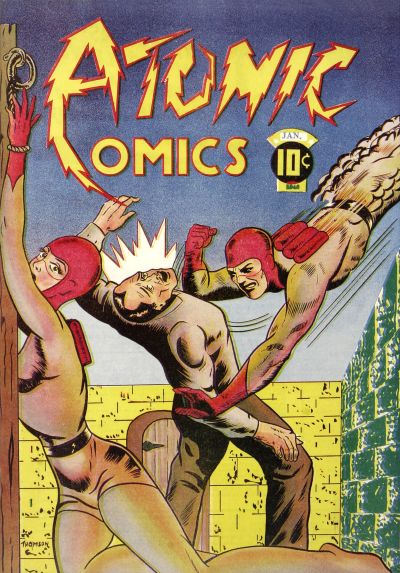
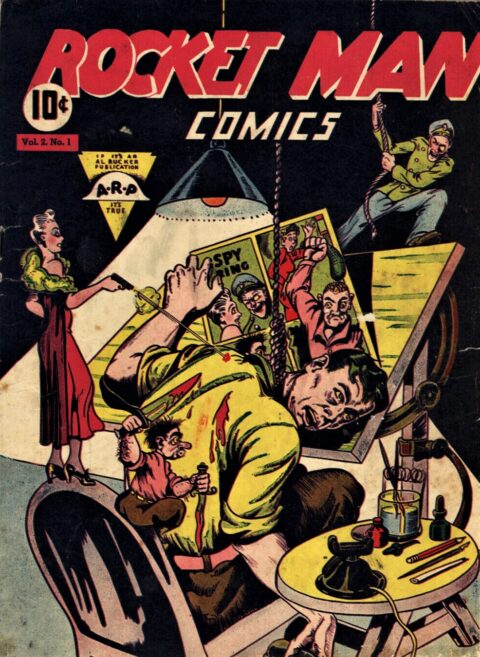
RAID Press has expressed a solid interest in helping this proposed publication come to fruition by taking on the crowdfunding, design, and distribution of the book as part of what they would call their “Heritage” line (which would be an extrapolation of their two current properties of the Johnny Canuck compilation and the Mr. Monster book – RAID’s heritage line may also be a place for a second and updated edition of my Heroes of the Home Front book). The format of the book would be a 9” x 12” hardback, much in the same fashion as my Heroes book, which would allow for four cover reproductions on each page as well as a number (50?, 100?, …) of select covers reproduced full-sized, one to a page. The sequence of covers presented would follow the alphabetic order used in my WECA Comic Book Price Guide, beginning with Action Stories of the Mounties and finishing with Zor the Mighty. Each cover reproduction will be accompanied by two or three lines of text underneath it that will provide information such as title, issue number, date, and artist. In discussions with RAID, the plan would be to have this book of Canadian World War II comic covers out by March of next year. I’m confident that, with the professionalism of the RAID Studio team, this can and will happen.
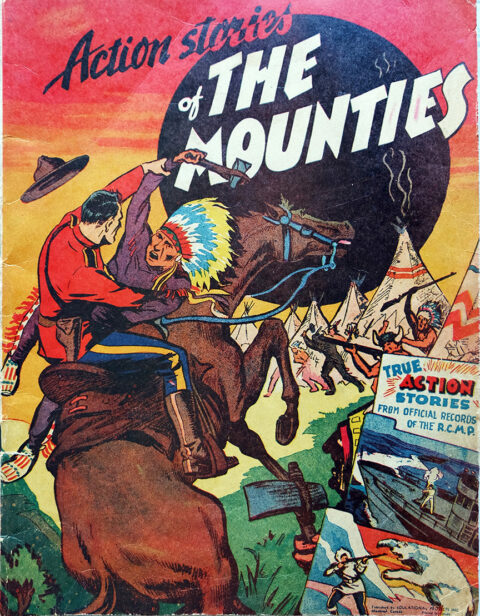
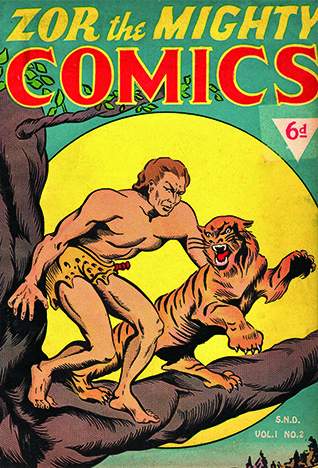
The big question, of course, is how many and which covers should get the full-page treatment? In fact, were there any more than a handful of great covers from this six-year first run of Canadian comics during the war? I think there were. We must remember that the ratio of great covers to the whole run is not of the order of, say, what EC comics produced. Though Gaines’ company only produced about 460 issues during its ten-year run (1946-56), its stable of creators and the cultural attitudes and capacities of the times allowed for much more to happen in terms of themes and covers.
In Canada, it was four major publishers (Maple Leaf in Vancouver, Anglo-American and Bell Features in Toronto, and Educational Projects later on the scene in Montreal) that thrived because of and through a world war in a cooler climate of mores and attitudes than was prevalent in precode America a decade later. Each one of these publishers had its own Art Director who, besides overseeing the art input into their comics, ended up drawing most of their titles’ covers. For Maple Leaf it was Vernon Miller and then Jon Stables; for Anglo-American it was probably Ed Furness (though Ed has said that June Banfield also did a lot of work on Freelance including covers); Bell Features started with Edmund Legault, moved to Edmond Good, and then to Adrian Dingle; Educational Projects had George Menendez Rae.
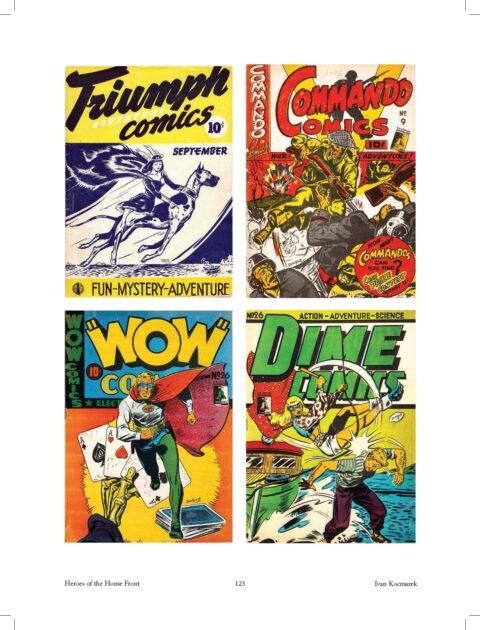
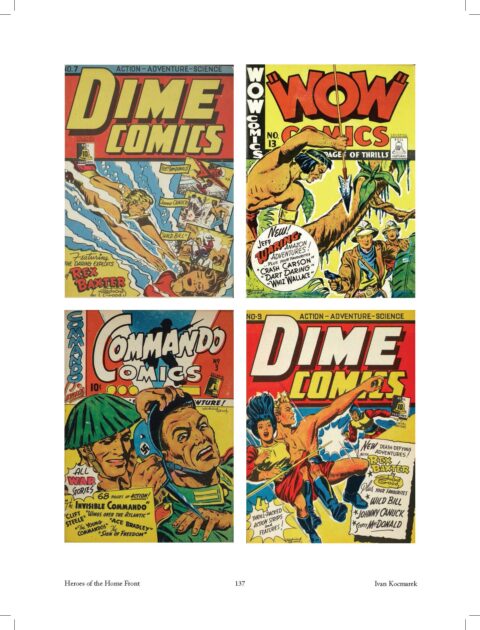
Though this run of Canada’s first comic books might not approach the cachet that those EC covers command, they are all far rarer than any EC and have a genuine quality that stands on its own, especially for Canadians. As whole comics, the rarest and most desirable are the west coast Maple Leafs and Adrian Dingle’s Hillborough books. Count yourself very lucky if you can add any of these to your collection. The most common appear to be the Anglo-American full-colour books that started to come out in the summer of 1945 and had some distribution in the US. It would probably be impractical, even futile, to attempt a Gerber-type rarity scale though we can safely say that none of the WECA books in the CGC Census has more than 10 copies and many have none. Of course, if we have to leave any blank spaces in our array of covers, then you know that no copies could be located and that these books would have a Gerber Scarcity Index value of 11.
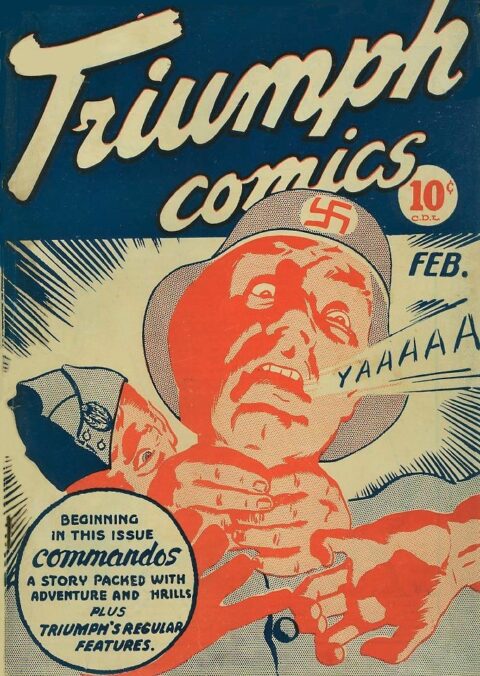
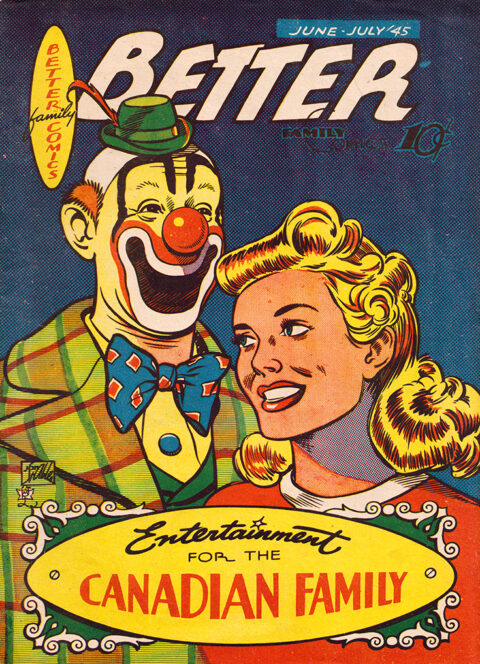
The books that have so far been the hardest to get solid grade copies, with little damage to the covers, were the black-and-white Anglo-Americans because their covers were of an inferior, non-glossy stock which was more susceptible to deterioration (brittleness, tearing, chipping, creasing, and staining) than the regular glossy stock covers of the other Canadian companies. However, I am happy with the overall quality of the scans we have been able to get. Also included will be just over a dozen coverless comics put out by Century Publications in 1946 that seem to show up most commonly in the UK. These will have their first splash pages included just for completeness.
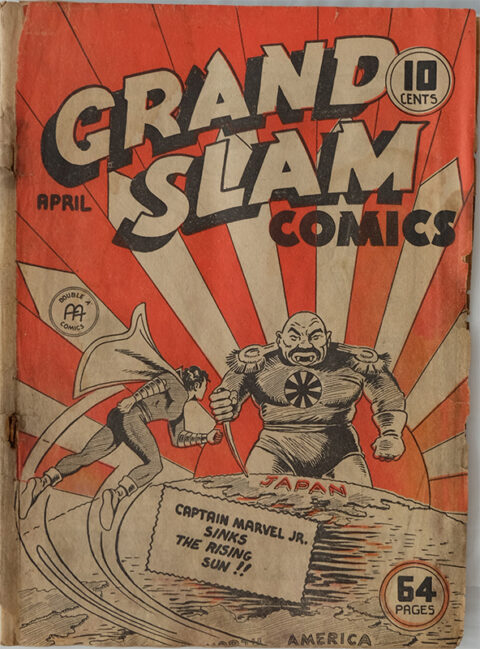
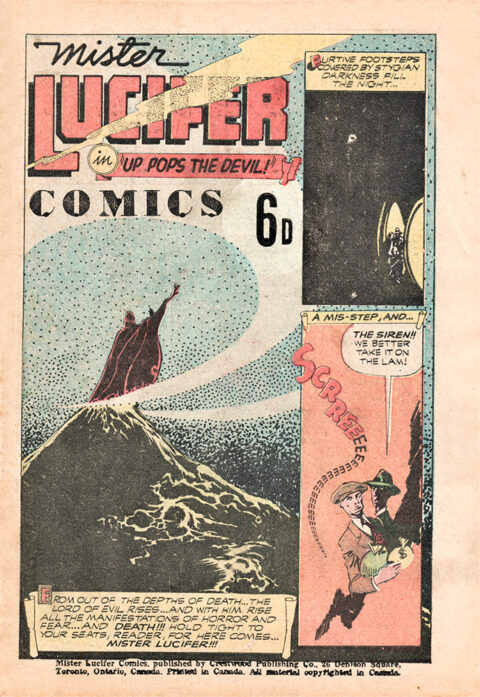
A couple of questions now arise. First, which coves should get the full-page treatment? For example, I wrote a column about some of the ones I chose as the best example of covers from this first Canadian era back before the pandemic. You can see them here. Second, what should be on the cover of the book itself? Should it simply be an array of some of the best cover images or should it be a new commissioned illustration by a contemporary Canadian comic artist, or a combination of the two, or even something else? I would readily welcome any preferences or suggestions from readers on either of these points or anything to do with the proposed book at all.
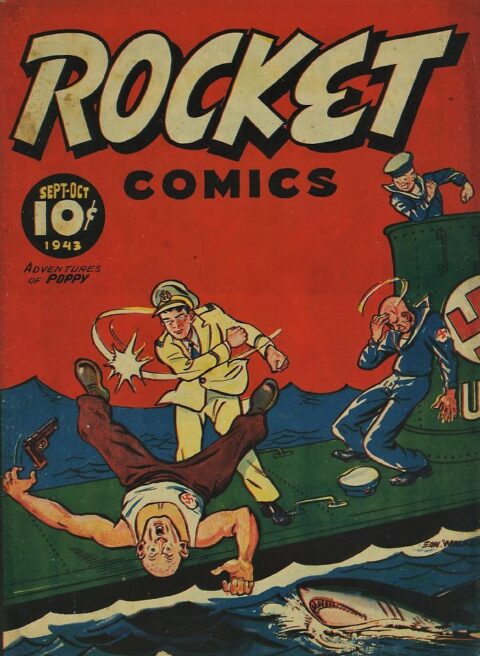
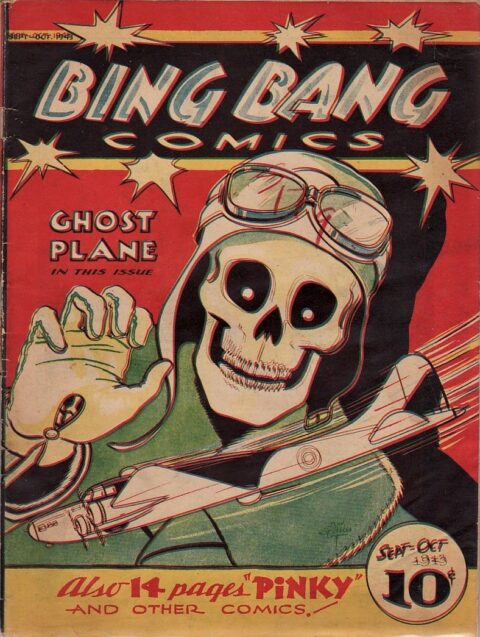
In the end, I think having a volume like this of good-quality pictures of as many of the Canadian wartime comic covers as possible would be very attractive to collectors of these books and possibly to school and civic libraries.

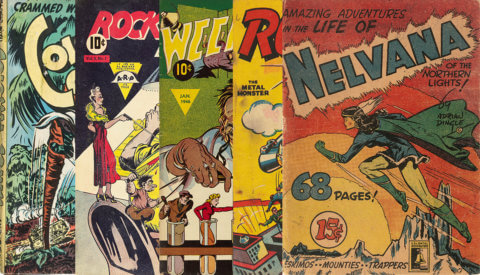
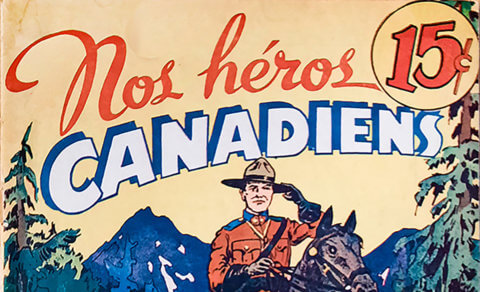
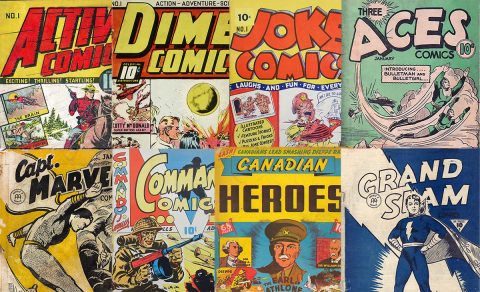
Ivan, I’m looking forward to this book. I was wondering; although I don’t own any Whites, do you have a list of the remaining isses that you are looking for?
That way, if anyone has any, they can contact you and make arrangements to get a scan to you.
It would be far easier if everyone sent me their ‘whites’ & I will try to track down the remaining copies myself. I will keep you notified of my progress- excelsior !!!
BTW- I could use some cash too. Just saying.
Thanks for your comments Klaus (you’ve got to make it up here sometime so that Walt and I can sit down and chat with you) and Froggie. Actually, I’m trying to get away from the term “Whites” to describe these books because it’s inexact (nobody seems to know the range of books it refers to–at Cons, dealers are always asking me “Is this a ‘White?'”) and also, given today’s socio-cultural climate, the term carries with it a lot of racial baggage. Next time you’re out shopping, stop a couple of people and tell them “I love Canadian White” and see what sort of reaction you get. This was a term coined by collectors over half-a-century ago when they didn’t know much about them and I think it’s run it’s course. I try to call these books Canadian war time comics or WECA comics for the War Exchange Conservation Act that brought them into being and bracketed their existence. As for the covers I still need… I’m not at the point where I’ve become stuck. I’ve got 610 great cover scans of the 788 books we know about (that’s about 77%) and there are still a few more sources to tap. When I do finally become stuck, I’ll make that clarion call out to the world of collectors to see if they can help.
I’m so pleased to hear this new project is moving along. I think it’s going to help raise awareness of all the great WECA covers. Ivan, you are very good at choosing the best covers to run full size, judging from your posts and even this one…great images, some new to me. So I wouldn’t have a lot to contribute in suggestions. Even at four per page, the repro size will be excellent and larger than most images in Gerber.
On the revised priceguide, here’s a suggestion. You could add the highest auction results, or simply ANY auction results to confirm exactly what prices have been realized for certain books. That could also work as an informal scarcity guide. A CGC census would be even better; I suppose you could both unless that may be too much data to deal with, but at least you can get this at your fingertips off the CGC and CBCS site and/or off GP Analysis.
I like the idea of having some kind of auction results; one of the vintage paperback guides did this once and it offered collections hard evidence of what books have sold for. I’ve copies several auction results that you or Walter ran, straight into my own (digital) want list, to keep them at my own fingertips.
It would also serve as a kind of Gerber scarcity but without a lot of speculation on your part….just how many have been slabbed or simply sold slabbed. I’m probably not being real clear here, but hopefully you get my gist—more pricing information, more scarcity information, making the guide even more informative. And all the more necessary for people to buy the 2nd edition, always good marketing strategy.
I’m pleased to read you may do future books through RAID. The new Mr. Monster book mentioned has done very well and I’ve heard nothing negative from Michael Gilbert about RAID, who worked closely with them on his Mr. Monster book. I’m glad to hear their Johnny Canuck compilation is still in print, though that may not bode well for their overall sales. As handsome as that book is, it never sold up to potential for me. But it’s been seven years since it came out and I let it go from my website and cataglogs. It might be time to restock it and give it another go.
As a bookseller in the U.S., I’ve found nearly every book on Canadian Whites to be a bit of an uphill battle for me to sell. I try very hard to turn U.S. collectors on to them but with never more than limited success. My particularly market, which is most likely older and more traditional collectors, has always been small for the whites or books about them. Mr. Monster is an exception due to the tie in with Michael Gilbert’s wonderful recreation of the character, and we further promoted it with a bookplate signed by Michael, who’s been a friend for many years. Your priceguide and Heroes of the Homefront were not runway sellers for me, but they did do okay and I sold out on both over time. Maybe that just has to be good enough.
I really would llike to see a new edition of Nelvana, which was the other break-out Canadian Whites book for me. Technically I guesss it is not really out of print since there is a POD (print on demand) version on Amazon for $25. But I believe that my last correspondance with Hope Nicholson was to the effect that it was economically impossible for me to stock the book (as a retailer) given the high POD cost of each copy. Which mean mosdtly likely that no one BUT Amazon is probably handling it, unless maybe she has copies in some Canadian bookstores? It needs to see a new physical mass printing so it can be offered again via Diamond and even through a normal book distributor like Random House or Simon and Shuster, which is where bookstores mostly get their graphic novels, if not from Diamond.
Thanks for the thoughtful post chock full of good suggestions and ideas, Bud. You know, when I put out Heroes and the WECA Guide, the idea was to raise the profile (which with so many Canadian and American collectors was flat lining) of those Canadian war time comics, the creators behind them and the treasures inside them. As long as I was able to break even and cover my expenses with these projects, I was happy because it allowed me to promote these forgotten books. I would only take on any new projects or revisit some of the older ones if I could have a good chance of achieving the same.
As for auction results on these books, I do list them in my Overstreet advisor’s report, but it might be a good idea to summarize their history in a new edition of a WECA guide. As far as I know, GPA doesn’t deal with any WECA books.
In recent talks with RAID, I know that they have expressed an interest in reissuing the Nelvana and Brock Windsor books as part of what they call their Heritage line (which is where the Mr. Monster and Johnny Canuck volumes currently are and where they’d like to place anything I come up with).
Bottom line is that I’m doing what I love as an old retired fart and my wife seems to be putting up with it and even seeing the reward in it. What more could I ask for?
Glad to hear that Nelvana and Brok Windsor are on RAID’s radar. Reprint collections of American golden age and silver age books in general are doing okay in general, but just okay, with the occasional break-out book such as Blackhawk, Planet Comics, and Senorita Rio. The Ditko Charltons from 1955-60 are pretty popular also, all from PS Artbooks.
PS is still pumping out books like there is no tomorrow, some of which don’t really deserve it, but collectors are still getting lots to choose from. I’ll suggest they look into WECA books. But I suspect source material will probably be the hang-up, as well as how they perceive sales might be for for them in the U.K. and the U.S. I don’t know what their Canadian market is like, is Diamond the only source for them up there? Diamond doesn’t keep any of their titles in stock, they just sell them through. That’s why I do fairly well with my sales of them, I seem to be one of the only sources for their backstock as I try and keep most of their books in stock as long as I can.
I had no idea GPA didn’t do WECA books…that is a bummer. I just assumed they did. Heritage’s auction records are easy to search, but I don’t know about Comic Link, Comic Connect and the other sites. I don’t use them. Regardless, you’d only be getting incomplete data on auction sales with a lot of work involved. That’s a bummer. MyComicShop offers auction records but only when you are to the point of pricing books you have consigned to them; I can only assume they pull those straight out of GPA but I’ll look into it. Still, it’s not a ready source otherwise. They do offer you a CGC census on books they are listing on their site.
Glad to hear that you are doing what you enjoy. We are all the richer for it. You deserve an honorary doctorate in Canadian Comics History. I’m thinking you already have Shuster Award; if not, you should.